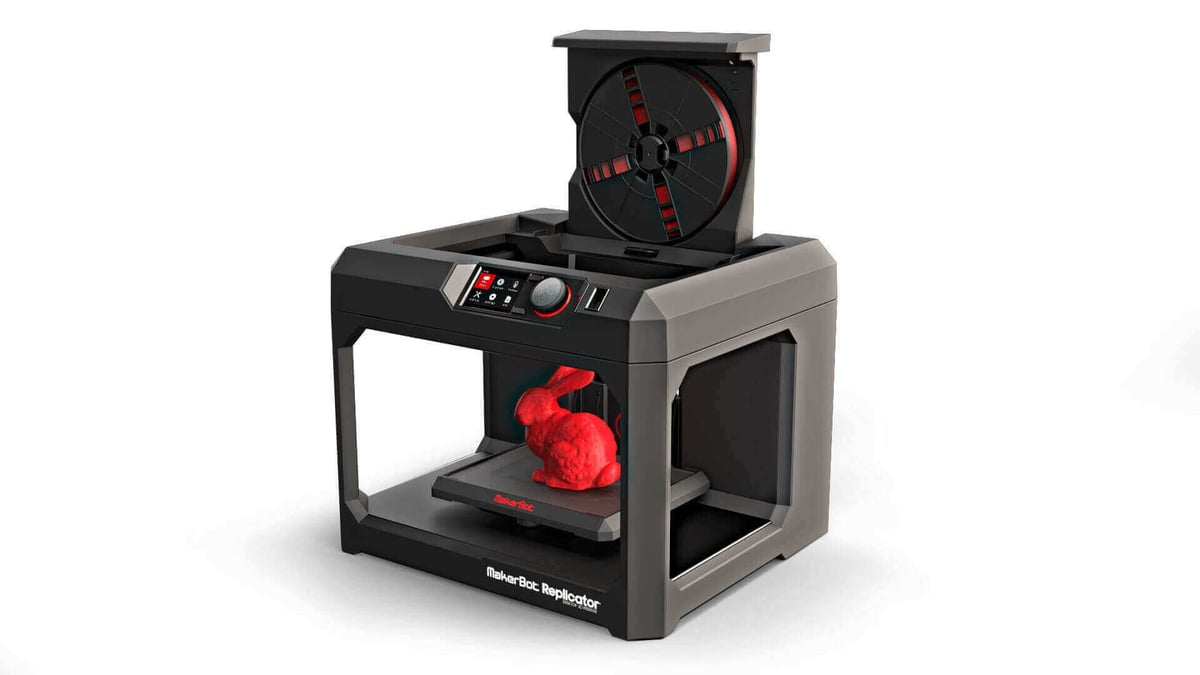
If you’re into 3D printing, Rachel Park doesn’t need an introduction. As a journalist, she covered the 3D printing and additive manufacturing sector since 1996. She led 3D Printing Industry as Editor in Chief and also edited Disruptive Magazine for 3D Printshow. Currently, Rachel works as an independent freelance journalist and runs her own copywriting and editing company.
Makerbot: A Phase of Consolidation
I had the pleasure of interviewing Andreas (Andy) Langfeld last year, a couple of months after he took up the reigns as General Manager for MakerBot in the EMEA region. My colleague here at All3DP, Bulent Yusuf, talked to him at the end of last year too, the results of which can be found in this great interview here.
What becomes clear from these two standalone interviews is that Andy is a company leader that likes to lead from the front and — unusually — he likes to talk to the press frequently and openly but always with purpose. And so it was that I had the opportunity to catch up with Andy again last week and I was delighted to take it because Andy is one of those people in 3D printing land that I enjoy talking to because he doesn’t hold back. Obviously, there are lines over which he cannot step, no matter how hard I try, but that’s par for the course.
During the last couple of months, MakerBot has made a couple of statements of intent with the business I believe, and I wanted to get Andy’s take on that. It seems Andy was on the same page because he told me that his purpose in speaking with me was “to address some of the confusion in the market, outline the phase of consolidation that MakerBot is going through and talk about some of new developments.”
So we did.
Andreas Langfeld: “3D printers are part of the solutions we offer”

We got to the bottom of the consolidation phase quickly and easily enough: “This is about Stratasys being a solutions company,” Andy explained. “The 3D printers are part of the solutions we offer, but so are the materials, the software, services and training — at every level — and that includes MakerBot. Since we last spoke MakerBot has closed its Stuttgart facility and moved its European operations to the Stratasys HQ in Rheinmuenster. This has allowed us to share a service model and for MakerBot to leverage the power of Stratasys’ sales and marketing channel. Learn by experience.”
I was also fascinated to learn that Andy is completely on the same page when it comes to education — in that the formal education system is way ahead with 3D printing than education accessibility for the pre-millennial generation. “We have found that education is a bit slow, people need to be 3D printing ready, especially for industrial AM. Companies need internal learning centres and this is a perfect fit for MakerBot and one of our target markets. With MakerBot solutions we allow companies to step into the world of creativity and innovation unique to 3D printing, and thus complement the full Stratasys offering.”
Furthermore, for 3D printing education within industrial fields, Andy explained how they are finding a “classical ‘across the chasm’ pattern and MakerBot is able to provide a sound pathway across the chasm with a combination of workshop and consultancy initiatives. We partner with our clients to help them to build up internal learning centres and educate their designers and inject the additive mindset into the company culture. We realized that this was a real market opportunity and have witnessed companies utilizing our demo centre. We see that often it is not wholly disruptive from Day 1 – it can be a slow burn where companies bring the concept models in-house to begin with. They still outsource functional models / tooling etc. But once they get it, it tends to move quite quickly and subsequently triggers ‘what else can I do?’”
I was really impressed with this approach actually — it’s no longer about ruling the world (never explicitly a company goal, but always implied in MakerBot’s early days, I thought) it’s about converting companies, one at a time if necessary, in a compelling way.
Andreas Langfeld: “The developer program is offering a place for everyone to contribute to the community”

And so we moved on to the latest news coming out from MakerBot — a significant update to the company’s content platform — Thingiverse — in the form a new Developer Program. I know I am not alone in believing that Thingiverse is MakerBot’s USP. Of course, 3D content platforms are numerous these days, and Thingiverse was not even the first 3D model repository; however, it was the first with a dedicated emphasis on 3D printable models, grew quickly and despite a couple of bumps in the road, remains the most used platform — in terms of uploads, downloads and general traffic.
Andy told me that the new API extension for developers is about “enhancing the platform that we have so that it is not just for great content but also increasing accessibility and sponsoring the innovation in all of us. I really do believe that innovation is in every one of us. The developer program is offering a place for everyone to contribute to the community. It’s really all about that and to signal that we acknowledge our community – it’s not just about the box! Reasonably priced 3DP is one thing – but increased access is MORE important and we want to be able to support everyone that wants to join this growing industry and offer a platform where innovators can contribute.”
I also took this opportunity to ask about the whole Just3DPrint debacle back in February, when a group of commercially minded, but terribly misguided students downloaded a large number of Thingiverse models and starting selling 3D prints of them, via ebay, at elevated prices with no regard for designers’ rights or CC licenses. When the story broke it generated a great deal of press attention and community furore, with many community members looking to Thingiverse’ owners to take a stand. Which they did. Andy was not directly involved with the MakerBot response, as it was handled largely from the States. But he knew the full story. I intimated that I had been rather impressed with the MakerBot response – in general and legally, and he seemed pleased, again placing an emphasis on the responsibility of MakerBot to protect its community.
As we rounded up our interview Andy gave me plenty more to think about, actually, about MakerBot and about the future of 3D printing in general. He said this:
“In our industry now it’s not about the printer and that’s a journey we have been on as we moved from being a start-up that was product oriented to a solutions-oriented company. We’re getting there quicker as a part of Stratasys. So while the market may say we have ‘lost focus’ and ‘what are they doing?’ the answer, categorically is that we are focused on the long-term. There is often a lot of confusion in a growing market and I just want to transmit the confidence we have in what we’re doing. All the analysis predicts huge growth over the next few years — but it won’t ‘just happen’ — we have to keep working hard. And do you know what, even if we released a 3D printer tomorrow that can literally do everything that everyone wants, it wouldn’t succeed without the right accessibility and ecosystem.”
I thought that was a really good place to end!
License: The text of "What’s Happening At Makerbot?" by All3DP is licensed under a Creative Commons Attribution 4.0 International License.